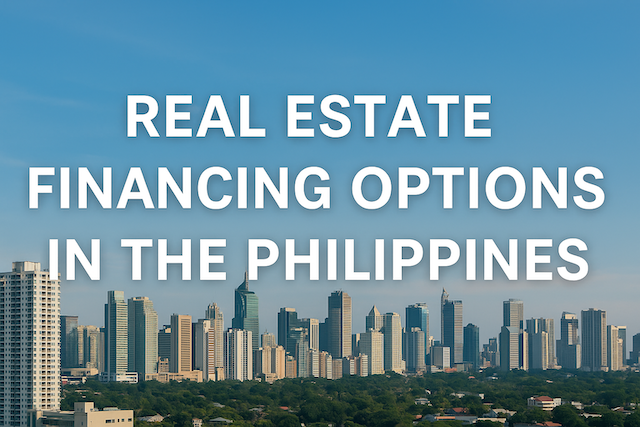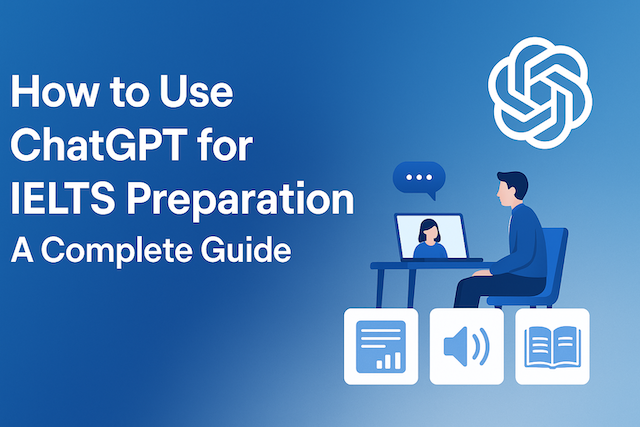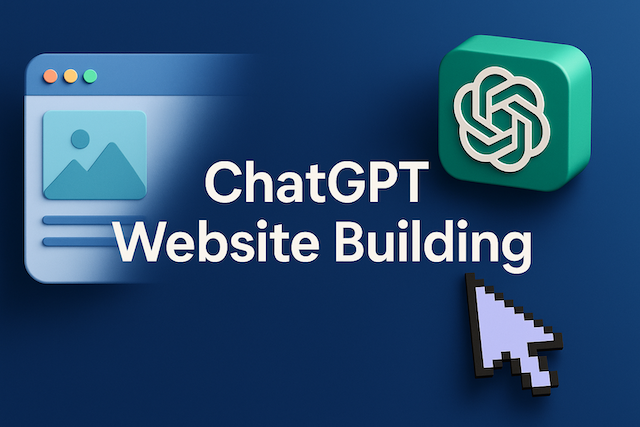Real Estate Financing Options in the Philippines
Buying real estate is a major milestone, but it often requires significant capital that many individuals cannot pay upfront. Whether you’re a local buyer or a foreign investor, understanding the real estate financing landscape in the Philippines is crucial to making informed and financially sound decisions.
This guide will explore the available financing options, eligibility criteria, documentation requirements, benefits and drawbacks of each method, and special considerations for foreigners and overseas Filipino workers (OFWs).
1. Why Financing Matters
In the Philippines, real estate values have steadily risen due to urbanization, infrastructure development, and rising demand from both locals and expats. With condos in Metro Manila and Cebu costing anywhere from ₱3 million to ₱15 million or more, financing helps make property acquisition feasible without draining personal savings.
2. Who Can Apply for Financing?
Generally, the following individuals are eligible for home financing in the Philippines:
-
Filipino citizens (employed or self-employed)
-
Permanent residents
-
OFWs (Overseas Filipino Workers)
-
Foreigners with certain limitations
-
Locally employed expatriates with resident visas
-
Business owners or professionals with verifiable income
Most banks require that borrowers are between 21 and 65 years old (not older than 70 at loan maturity).
3. Types of Real Estate Financing Options
A. Bank Housing Loans
Banks are the most common and widely used financing institutions in the Philippines. Major banks such as BDO, BPI, Metrobank, Security Bank, and RCBC offer competitive housing loan packages.
Features:
-
Loan amount: Up to 80% of the appraised value
-
Terms: 5 to 25 years
-
Interest rates: 6%–10% (fixed for 1–5 years)
-
Purpose: Purchase, construction, renovation, or refinancing
Pros:
-
Lower interest rates than in-house financing
-
Flexible terms and repayment options
-
Ideal for buyers with good credit history
Cons:
-
Longer processing times (2–4 weeks)
-
Stricter eligibility and document requirements
-
Often not accessible to foreigners without a long-term visa
B. In-House Financing (Developer Financing)
Many real estate developers in the Philippines offer in-house financing for buyers who may not qualify for bank loans or prefer simpler arrangements.
Features:
-
Direct payment to developer over 5–10 years
-
Higher down payments (20%–50%)
-
Interest rates: 10%–18% annually
-
Faster approval (1–2 weeks)
Pros:
Cons:
C. Pag-IBIG Housing Loan
The Pag-IBIG Fund is a government-backed savings program that also provides low-interest housing loans to its members. It’s one of the most affordable financing options available.
Who Can Apply:
Features:
Pros:
Cons:
D. Lease-to-Own Arrangements
Some developers and individual sellers offer lease-to-own or rent-to-own contracts, where part of the rent is applied toward the eventual purchase of the property.
Features:
-
Monthly rent counts toward purchase
-
Usually 1–5 years before full ownership
-
Often comes with fixed property price
Pros:
Cons:
-
Higher total cost in the long run
-
Risk of forfeiture if tenant defaults
-
Property title transfer only after full payment
E. Cooperative and Rural Bank Loans
For buyers in provincial areas or lower-income brackets, small rural banks and cooperatives may offer real estate loans with localized terms and more relaxed qualifications.
Features:
Pros:
Cons:
4. Required Documents for Financing
Though documents vary by institution, here are the standard requirements:
A. For Locally Employed Individuals:
-
Valid ID (government-issued)
-
Certificate of Employment & Compensation
-
Latest payslips (3 months)
-
Income Tax Return (ITR)
-
Bank statements
-
Proof of billing
B. For Self-Employed or Business Owners:
-
Business registration (DTI or SEC)
-
Financial statements (audited if possible)
-
Bank statements
-
ITR with Audited Financial Report
C. For OFWs:
D. For Foreigners:
-
Valid ACR I-Card (Alien Certificate of Registration)
-
Passport with valid long-term visa
-
Proof of income (local or foreign)
-
Marriage certificate (if married to a Filipino)
5. Down Payments and Loan-to-Value (LTV) Ratios
The standard down payment in the Philippines is 20% of the property’s selling price. However:
-
Developers may require only 10% for pre-selling units.
-
In-house financing might demand 30%–50%.
-
Banks typically finance 70%–80% of the appraised value.
Down payments are usually paid over 12–24 months, especially for condos under development.
6. Pre-Approval vs. Loan Approval
Loan Pre-Approval:
This is a bank’s conditional commitment to lend you a certain amount based on preliminary income checks. It’s useful to determine your budget.
Final Loan Approval:
After submitting all required documents and fulfilling appraisals, the bank or lender officially approves and releases the loan.
7. Tips for Getting Approved
-
Check your credit score: A good payment history increases chances.
-
Prepare all paperwork: Incomplete submissions delay processing.
-
Avoid new debt: Don’t apply for credit cards or car loans during the mortgage application.
-
Consider co-borrowers: Some banks allow spouses or family members to improve loan eligibility.
-
Start with a pre-approval: This saves time when house-hunting.
8. Can Foreigners Get Housing Loans?
Foreigners can get real estate loans in the Philippines under specific conditions:
-
Must have a long-term visa (SRRV, 13a, etc.)
-
Must buy a condo unit, not land or house-and-lot unless married to a Filipino
-
Lenders often require a Filipino co-borrower or guarantor
-
Interest rates may be higher, with more rigid collateral requirements
Some banks offering loans to foreigners include:
9. What Are Typical Loan Interest Rates?
Interest rates in the Philippines are often fixed for 1–5 years, then subject to repricing. As of 2025:
| Term |
Bank Loan Rate |
In-House Financing |
| 1 Year Fixed |
6.25% – 6.75% |
10% – 12% |
| 3 Year Fixed |
7% – 8% |
N/A |
| 5 Year Fixed |
8% – 9.5% |
N/A |
| Repricing |
Based on prevailing bank rates |
Fixed or balloon payment |
10. Refinancing and Balance Transfer Options
If you’ve already taken a loan, you can refinance or transfer your loan to another lender offering lower rates. This is common after the fixed term ends and interest rates increase.
Benefits:
Downsides:
11. Should You Use a Mortgage Broker?
Mortgage brokers help borrowers find the best loan packages across multiple banks. While not common in the Philippines, some firms offer mortgage assistance services, especially for foreigners and OFWs.
12. Conclusion: Choosing the Right Financing Option
Your ideal financing path depends on your citizenship, income, loan term preference, and risk tolerance. Here’s a quick summary:
| Buyer Profile |
Best Option |
| Local professional |
Bank loan or Pag-IBIG |
| OFW with remittance history |
Pag-IBIG or bank loan |
| Foreigner buying condo |
Bank loan (with long-term visa) or in-house financing |
| Low credit or self-employed |
In-house or rural bank loan |
| Unsure buyer |
Lease-to-own |
When choosing a financing option, consider not just the monthly cost but also the long-term implications on interest, flexibility, and asset security. Working with professionals—real estate brokers, financial planners, and real estate lawyers—can protect your interests and optimize your investment.
Frequently Asked Questions about Real Estate Financing in the Philippines
Can foreigners get a housing loan in the Philippines?
Yes, foreigners can apply for housing loans in the Philippines, but restrictions apply. They must have long-term visas such as the SRRV or 13A. Most banks require proof of income, local residency, and a Filipino co-borrower or guarantor. Only condominiums can be financed by foreigners, not land or house-and-lot properties unless married to a Filipino citizen.
What are the common types of real estate financing available in the Philippines?
The main financing options include:
- Bank housing loans
- In-house financing from developers
- Pag-IBIG Fund housing loans (for Filipinos)
- Lease-to-own or rent-to-own arrangements
- Loans from cooperatives or rural banks
What is the typical interest rate for housing loans in the Philippines?
Interest rates vary by lender and term. As of 2025, bank loans offer fixed rates between 6% and 9.5% for the first 1 to 5 years. In-house financing usually ranges from 10% to 18%. After the fixed term, bank loans are subject to repricing based on prevailing market rates.
What are the requirements to qualify for a bank housing loan?
Requirements differ slightly per bank but generally include:
- Valid government-issued ID
- Proof of income (payslips, ITR, employment certificate)
- Bank statements (3 to 6 months)
- Proof of billing or address
- Collateral documents (e.g., reservation or purchase agreement)
How much can I borrow to buy property in the Philippines?
You can typically borrow up to 70%–80% of the property’s appraised value. The actual loan amount depends on your income, age, existing debts, and the lender’s policies. Pag-IBIG housing loans allow up to ₱6 million, while banks can finance higher amounts for eligible borrowers.
What is Pag-IBIG housing loan and who can apply?
Pag-IBIG is a government-backed loan program for Filipino citizens, including OFWs. Members with at least 24 contributions can borrow up to ₱6 million to purchase or build a home. It offers some of the lowest interest rates and longest terms—up to 30 years.
How does in-house financing work?
In-house financing is offered directly by property developers. It allows buyers to pay monthly amortizations without bank approval. Terms are usually shorter (5 to 10 years), with higher interest rates and down payments (20%–50%). It’s suitable for buyers with less strict documentation or those who prefer a faster process.
What is the minimum down payment for buying property?
The typical minimum down payment is 20% of the property’s selling price. Some developers offer flexible terms with 10% down for pre-selling units. In-house financing often requires a higher initial payment—30% to 50%. The remaining balance can be financed through your chosen institution.
What documents do OFWs need to apply for a home loan?
Overseas Filipino Workers (OFWs) need to submit:
- Valid passport and visa
- Employment contract and job certificate
- Proof of remittance (past 3–6 months)
- Special Power of Attorney (SPA) if applying through a representative
- Pag-IBIG membership details (if applying under Pag-IBIG)
What is a lease-to-own agreement in Philippine real estate?
A lease-to-own agreement allows tenants to rent a property for a fixed period, with part of their rental payments credited toward the eventual purchase price. It’s often used when buyers can’t afford a large down payment upfront. However, terms and conditions vary by developer or private seller.
How long is the repayment period for a housing loan?
Repayment terms range from:
- 5 to 25 years for bank loans
- Up to 30 years for Pag-IBIG loans
- 5 to 10 years for in-house financing
Most banks allow early repayment with minimal penalties.
Can I refinance my existing housing loan in the Philippines?
Yes. Refinancing allows you to transfer your loan to another bank offering lower interest rates or better terms. You can also extend your loan term or reduce your monthly payments. However, expect processing fees, document re-evaluation, and possibly new appraisal charges.
What is the difference between pre-approval and full loan approval?
A pre-approval is a lender’s initial assessment of your creditworthiness based on limited information. It provides an estimate of how much you can borrow. Final approval comes after submitting all required documents, completing property appraisal, and passing the credit evaluation.
Do banks offer fixed interest rates in the Philippines?
Yes, banks typically offer fixed interest rates for the first 1 to 5 years of your loan. After this period, the rate will be subject to repricing based on prevailing market conditions. Borrowers can often choose between 1-, 3-, and 5-year fixed terms at the start.
Can I apply for a housing loan with a co-borrower?
Yes. Banks and institutions often allow co-borrowers—usually spouses or immediate family members—to improve eligibility. Their combined income increases the loanable amount and may improve approval chances, especially for high-value properties.
What are the penalties for missed loan payments?
Missing a loan payment may lead to late fees, increased interest, or even foreclosure. Most lenders impose a penalty interest (typically 3% to 5% monthly) on the unpaid amount. Consistent defaults may result in legal action or asset forfeiture.
Post Views: 883





